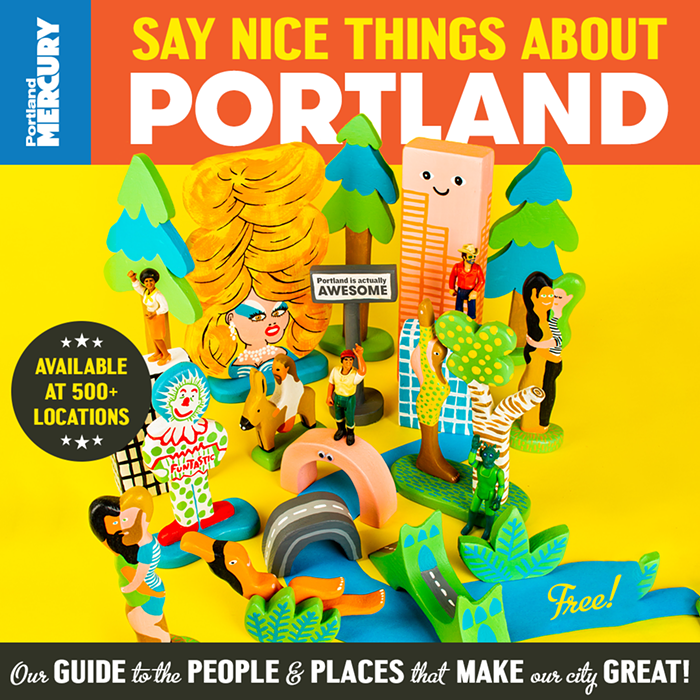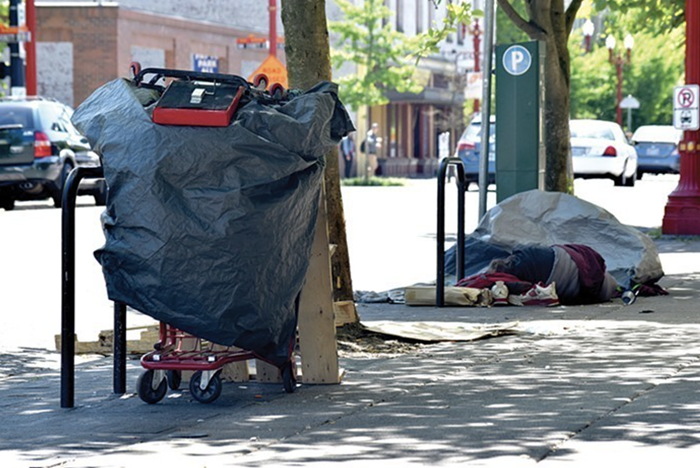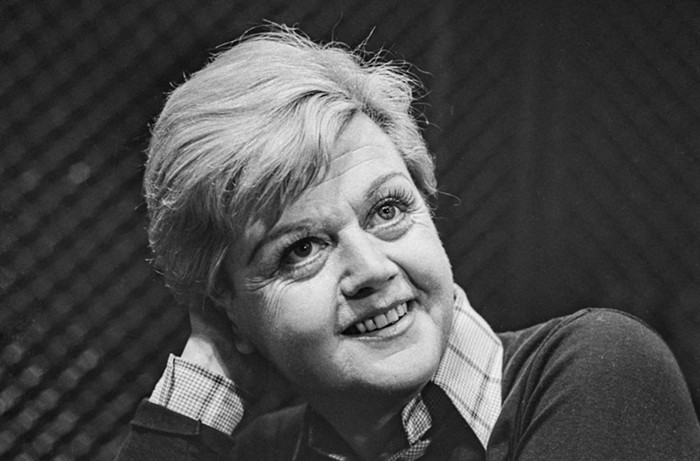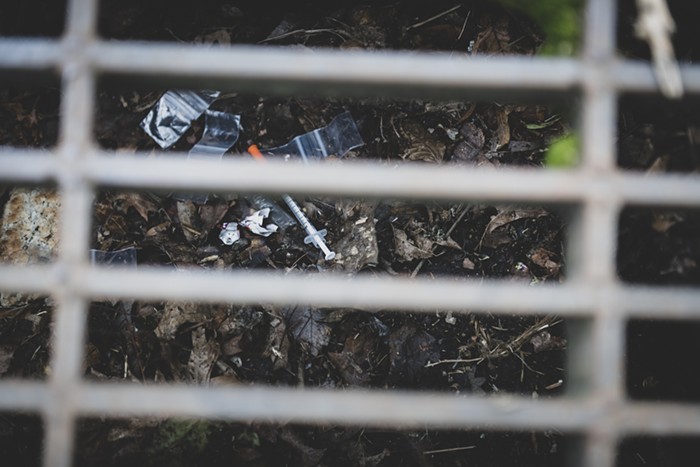It’s weird advice that always works: If you’re feeling sad, go see some art. When the news sucks and nothing seems okay, sometimes just getting outside, getting yourself to the museum or gallery, and looking at something someone made with their hands and their brain on a wall and not a computer screen will at least get you thinking differently. Portland’s full of places to do this. Here are a few to get you started.

The Wyeths: Three Generations at the Portland Art Museum
Even if you don’t know Andrew Wyeth by name, you’ve probably seen one of his most well known paintings, “Christina’s World”: In spindly, near-photorealistic strokes and a washed-out color palette, a woman is seen from behind, her dress a cottony whitish-pink, strands of her dark hair caught in the wind, one sharp elbow extending outward at a visibly uncomfortable angle. At the horizon line, a house and a barn jut out from the place where the faded, once-green ground meets the anemic, barely blue sky. The buildings are likely not far from the painting’s subject, but they seem miles away. It’s an instantly evocative image, the kind of painting it’s worth seeing up close, that commands your attention, that all but begs you to lose yourself in its slender, un-fancy details, its meticulous composition. The framing sets up an expectation of narrative, but leaves the viewer to fill in the details. Wyeth’s world is one of magical realism; it infuses ordinary subject matter with a sense of mystery and David Lynch-esque dislocation. It’s not surrealist work by any stretch—it’s grounded in reality, no one has more than one nose, it’s clearly figurative, etc.—but nonetheless there’s something unsettling about it.
Wyeth painted “Christina’s World” in 1948. The woman in it was his neighbor in Maine, who’d had polio, and, as Wyeth put it, “was limited physically but by no means spiritually.” The painting, then, is a nuanced tribute to her, one that legibly encapsulates both pain and effort, and a view that transforms an ordinary, finite stretch of land into an entire world reflecting its subject’s internal and external landscapes.
Wyeth came from a family of painters, and in a new traveling show, The Wyeths: Three Generations, the Portland Art Museum will exhibit work from several of them, including Wyeth’s illustrator father, N.C. Wyeth; his painter sister, Henriette Wyeth, and Henriette’s husband, Peter Hurd; and Andrew Wyeth’s own son, Jamie, a portraitist.
It’s a chance to get an up-close look at Andrew Wyeth’s quietly subversive style, and, with that much talent packed into one family, it’s also the art museum equivalent of The Royal Tenenbaums.
7-Jan 28, $16.99-$19.99 museum admission

This Is a Black Spatial Imaginary at Cascade Paragon Gallery
One show opens and another closes: This week is your last chance to see work from This Is a Black Spatial Imaginary, a multidisciplinary group show at Portland Community College’s Paragon Gallery and in public spaces throughout the city. Funded by a grant from the Portland Institute for Contemporary Art’s Precipice Fund, This is a Black Spatial Imaginary is huge, even for a group show: It features no fewer than 40 Black Portland artists—including Intisar Abioto, keyon gaskin, sidony o’neal, and more—working in a number of disciplines, including installation and video work, performance, and print media “at the intersection of art, collaboration, historical record, urban planning, collaboration, and creative exchange.”
In his 2011 book, How Racism Takes Place, George Lipsitz, a Black Studies scholar at the University of California at Santa Barbara, defined the “white spatial imaginary” as white Americans’ relationship to place and property, rooted in systemic racism and segregation, particularly with regard to property and access laws that have historically benefited white people as individuals. The “Black spatial imaginary” presents an alternative in which communities of color build connections through space, creating a social order that fosters communal survival rather than individual privilege. In a city where communities of color have historically been displaced, which reinforces the white spatial imaginary, an art show like this one presents an important counter-narrative. Many of the performances are already over, but it’s not too late to see this Saturday’s performance from Intisar Abioto, Akela Auer, and Oluyinka Akinjiola, who will bring movement and dance into the gallery space before the show closes next week.
Cascade Paragon Gallery, 815 N Killingsworth, Tues-Sat noon-5 pm, through Oct 14, FREE

Ellen McFadden at Ampersand Gallery
I first encountered Ellen McFadden’s work in Ampersand’s 2015 group show, The River Keeps Talking, which paired the 89-year-old painter’s work with pieces from Matthew F Fisher and Clayton Cotterell. McFadden was born in Portland, and attended what’s now the Pacific Northwest College of Art in the 1940s. Her latest paintings have a more structural, quilt-like quality than the bigger, gesture-focused works I saw from her last. The abstract compositions seem more meticulous, but her candy-colored palette hasn’t changed. Her painting “Satsop I” looks like what might happen if Sol LeWitt was given instructions to redesign the logo on a box of Good & Plenty. Its sibling, “Satsop II,” pairs a rigorous composition with Lisa Frank purple and magenta tones. These are abstract paintings, and by virtue of that alone, they won’t be for everyone, but I have a real soft spot for McFadden’s work. It’s never not fun. And besides, fall is here. We’ve made it through nearly a year of wintry politics. I’ll take all the color pops I can get.
Ampersand Gallery, 2916 NE Alberta, Wed-Sat 11 am-6 pm, Sun 11 am-5 pm, through Nov 12, FREE













